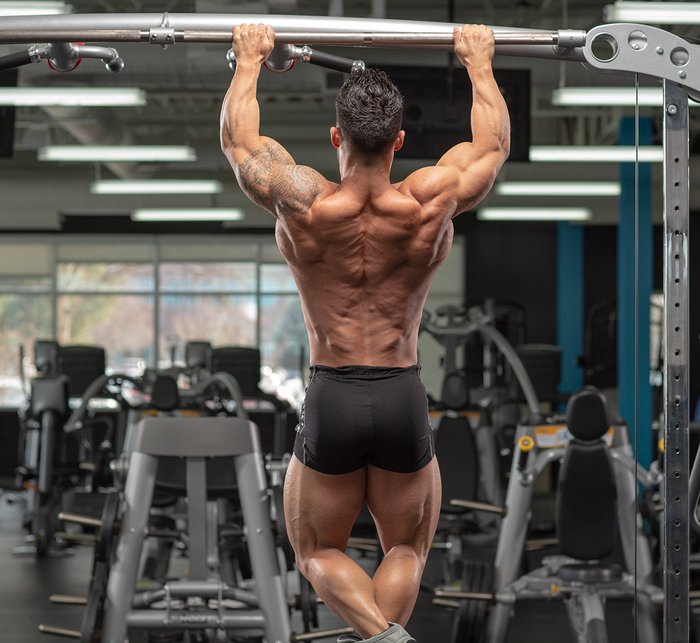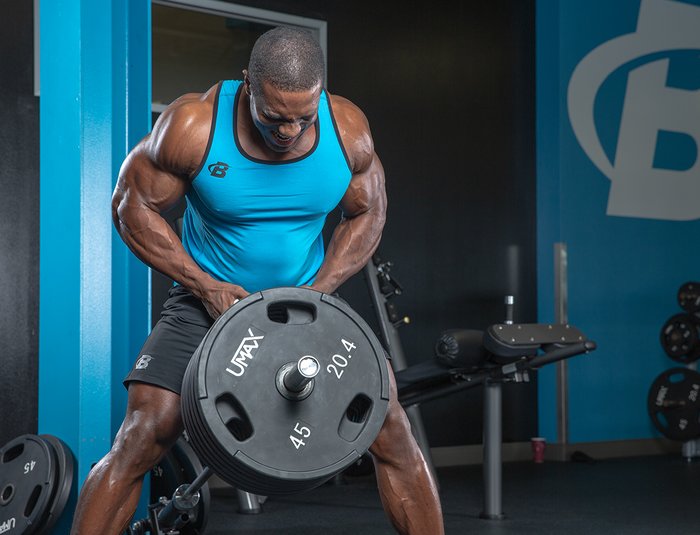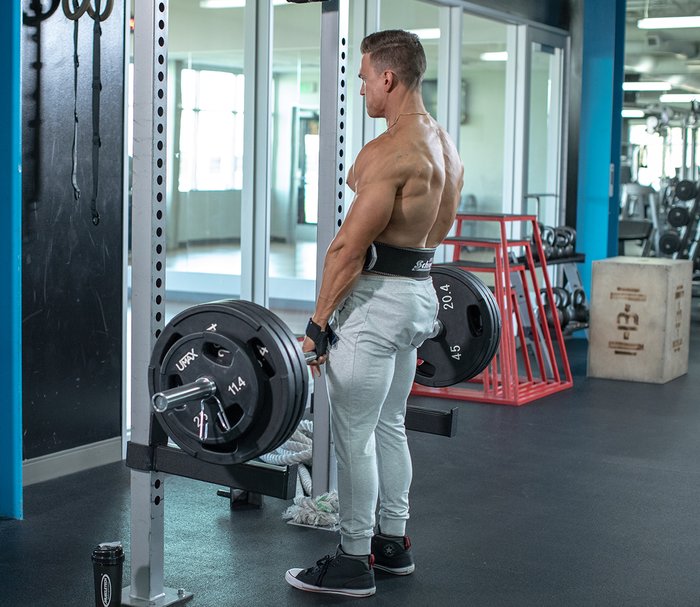Roger Lockridge
November 16, 2018
•
4 min read
There’s a reason those classic bodybuilding photos inspire you to keep cranking out reps: Everything they did in the gym worked! If an exercise was effective for building muscle 40 years ago, chances are it’ll build muscle now.
I’m not saying you have to abandon all your new-fangled gym gadgets or fancy corrective exercises. But if going back to basics can help you realize your full muscle-building potential, then why not give these old-school exercises a try? This workout might be exactly what you need to get your back gains back on track!
Old-School Back Workout
Note: 90 sec. rest between sets
Technique Tips
Pull-up
Starting a back workout with pull-ups was once a common practice, so if your back warm-up has morphed into hunching over a smart phone to update your “status,” it might be time to give this exercise prime position in your lineup of back exercises.
Pull-ups warm up the whole upper body. No matter how good you are at performing them, they never really get easy. You know you’re always giving your back a righteous workout.

Wide-grip pull-ups have always been popular, but old-school greats also used the close-grip version to emphasize the lower lats. Use both if you can, taking each to failure. If you can, use some assistance on your first set, giving your muscles a chance to warm up.
Pendlay Row
Many great lifters of yore did barbell rows on a bench. Gyms these days frown upon willful destruction of equipment upholstery, so the Pendlay version will help you keep your membership—and your gains.
Warm up with lighter weights before going heavy. If you need straps, use them; train grip another time. Start with the bar on the floor. In a bent-over position, with your back flat, row the bar up to your chest. No standing up and bending back over, and no rack pulls.
This exercise gives you a longer range of motion with a heavier weight. It also completely isolates the back by keeping your hips and legs out of it. Everything from the lats to the rear delts to the lower back will all be a part of the action.
Behind-the-Neck Pull-down
The thinking behind these (see what I did there) is that since the target muscles are in the back, you should pull the bar down behind your neck to better activate them.
Now, if you have shoulder issues, pull to the front instead. If you decide to give the behind-the-neck version a try, go down only to the base of the skull.
Perform these pulls slowly. Remain as upright as you can. Leaning forward shifts the emphasis onto your shoulder joints, which won’t help you. Don’t try to set any records with weight—just take your time and focus on engaging the back.
T-Bar Row
Nowadays it’s popular to use a chest pad or incline bench for support and to isolate the upper back. But if you have the option to do these unsupported with a bar in the corner or using a landmine, go for it. Not using the bench for support forces you to stabilize with your core and lower back.

Remember to load the bar with smaller plates. You’ll have a better range of motion. You can also use regular plates and stand on a box if you need to go heavy.
Pull-over
Some gyms have a pull-over machine. If yours is one of them, go hug the manager and then start using it. Otherwise, do these lying across a bench with a dumbbell.
Either version is going to give those lats a really good stretch, which will be beneficial at this point, when you’ve got a pump going. The extra stretch makes more room for blood to get in there so you can recover once you leave.
Rack Pull Deadlift
Yes, ending with deadlifts is as cliché as starting with pull-ups, and your lower back is already on fire. Regardless, there are still benefits to doing rack pulls at the end of your back workout just like the greats of the Golden Era did.

Since your muscles are already fatigued, you’ll have to use less weight, which means you’ll be able to feel the muscles working in this killer finisher. In addition to adding overall thickness and density to your back, this exercise will also benefit your traps.
To make it more challenging, do deadlifts outside of the rack. Stop just short of the weight touching the floor and then pull again. This mimics the same range of motion but keeps tension on the muscles. Again, belt and straps are fine at this point if they help you finish strong.
For more killer old-school upper-body training ideas, check out “Old-School Ways to Build Your Chest.”
from Weight Loss Insider https://ift.tt/2DvIA9O
via Best Weight Loss Supplement

0 comments:
Post a Comment